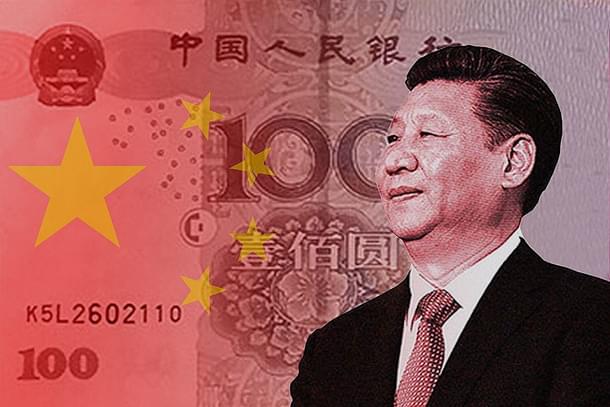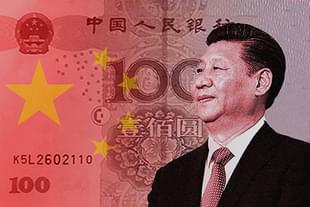World
Paranoia Trumps All: China Disproves Theory That Nations That Trade A Lot Seldom Go To War
R Jagannathan
Jul 03, 2020, 01:53 PM | Updated 01:48 PM IST
Save & read from anywhere!
Bookmark stories for easy access on any device or the Swarajya app.


One quaint theory on geopolitics suggests that countries that trade a lot with one another seldom go to war. China is not yet in any formal war with it largest trading partners, but it is close to disproving this theory.
In recent years, and more specifically since the Covid-19 pandemic devastated economies all over, China has raised hackles and tensions with all its major trading partners, even starting a limited offensive against India along its Ladakh borders.
Tensions have risen with all its major trading partners, from the US and the European Union (overall trade of $583 billion and $573 billion respectively in 2017), Japan ($303 billion), Hong Kong ($286 billion), and Taiwan ($200 billion). (See here and here for details on China’s major trade partners).
Both the Philippines and Vietnam are rattled by Chinese moves on the South China Sea, and China has been yelling blue murder over the decision of a Japanese city council (Ishigaki) after the latter decided to rename some islands that China claims as its own (the Senkakus in the East China Sea).
More recently, China imposed its own security law on semi-autonomous Hong Kong, thus violating the agreement it entered into with Britain in 1997 under which Hong Kong came under Chinese sovereignty on the basis of the one-country-two-systems formula. It has violated Taiwanese airspace many times by sending its J10 military jets in a show of power.
Australia, which is no threat to China and has no territorial disputes with it unlike some others, has also been threatened over its stand of seeking a fairer inquiry into China’s role in the spread of Covid-19.
The common element in all these tensions is China’s paranoia, and not just high levels of trade partnership. If China can seek enmities with all its major trading partners, and that too all at the same time, it goes to suggest that paranoia trumps commonsense economic interests.
India’s case is particularly interesting, for China runs a massive annual trade surplus of over $50 billion (last six years’ average: $52 billion). This annual booty should make China see more gains from peace with India than from aggression. But that isn’t the case.
India has let China build its trade surplus to unsustainable levels in the hope that massive gains from the Indian market will make it a friendlier nation. China, on the other hand, sees its massive surpluses as a sign that India is the weaker party, and hence more amenable to intimidation and pressure.
India saw its trade deficit with China as a lever to use against the latter in case of conflict. China saw the same surplus in its favour as giving it additional leverage where India could be browbeaten to acknowledge Beijing’s superior status.
What this proves is that Chinese politics and economics are divorced from one another, and that political hegemony is dearer to it than just trade and economic gains.
Unlike its two vassal states, Pakistan and North Korea, which see free trade as a threat to their regimes, China sees things the other way. While it obviously wants economic power, it is willing to sacrifice some of that for hegemonistic gains.
There may be two reasons why China may be willing to take on the whole world right now.
One, it is less dependent on the world now that it was earlier, while the world has grown more dependent on its markets after 2008, when China shifted focus from mere exports to internal consumption.
And two, in a multilateral trading system, there is research to suggest that a country may be willing to risk war and sacrifice gains with one partner since the gains from the rest of its trading partners may be larger.
A 2019 McKinsey Global Institute study, titled China and the World: Inside the Dynamics of a Changing Relationship, has this to say:
“The relationship between China and the rest of the world appears to be entering a new phase. China’s economic miracle was fuelled by industry and investment, but today domestic consumption is the main driving force of growth. The country is becoming less exposed in economic terms to the rest of the world. However, reflecting China’s rise to being the world’s second-largest economy and its leading trading nation, the rest of the world is becoming more exposed to China. These shifts have been accompanied by trade tensions and rising protectionism in many countries, raising the question whether we have reached a point of peak integration between China and the world.”
This implies that the world is now becoming more dependent on China than the reverse, and this may be making China more willing to use belligerence as a form of ensuring political and economic hegemony.
A French study published a decade ago, asked an important question: does trade prevent war? The authors, Philippe Martin, Thierry Mayer and Mathias Thoenig, titled their study “Make Trade Not War?”, and their conclusions are interesting. Their paper, based on studying military conflicts between 1950 and 2000, questions “the conventional wisdom that trade promotes peace” and suggests that this statement “is only partially true even in a model where trade is economically beneficial, military conflicts reduce trade, and leaders are rational.”
They add: “When war can occur because of the presence of asymmetric information, the probability of escalation is lower for countries that trade more bilaterally because of the opportunity cost associated with the loss of trade gains. However, countries more open to global trade have a higher probability of war because multilateral trade openness decreases bilateral dependence to any given country and the cost of a bilateral conflict.” (Italics mine)
One wonders whether the combination of growing global exposure to China and the latter’s lower dependence on any one bilateral trade partner is the reason why the world has to deal with a rogue Chinese Communist Party drunk with power.
The logical counter to this Chinese gambit should be that the world can take on China only if it unites against it. Nobody can take on China on its own.
Jagannathan is former Editorial Director, Swarajya. He tweets at @TheJaggi.





